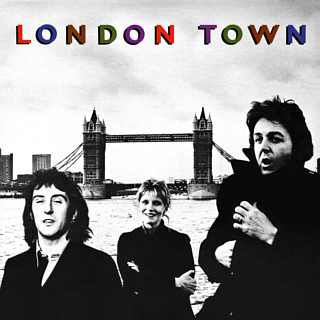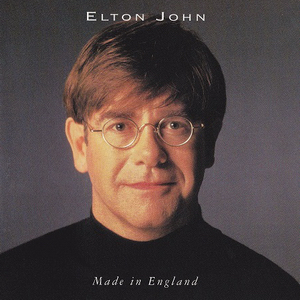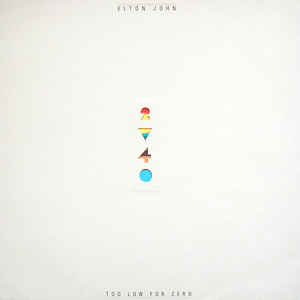
After the critical success of The Grass is Blue, it was probably a no-brainer for Dolly Parton and co. to make another bluegrass record. But they didn’t feel the need to rush, and so the follow-up Little Sparrow, was released into the world two years later. It made for another critical success for Dolly even bigger than the last, and became a decent hit on the country album charts, making it to #12, even cracking the top 100 on the pop charts. The album capped off its prestige run by netting Dolly a Grammy for best female vocal performance for “Shine.” Whatever the bluegrass traditionalists thought, it seemed that Dolly was very, very good at making this kind of music. But does Little Sparrow manage to outdo its predecessor?
Well, to my ears, it does it pretty much every respect. The Grass is Blue was a very good album, but Little Sparrow manages to take the same formula and achieve greatness. I’m not sure why this is, if it comes down to song selection or performance or what, since the production and sound are very similar, even carrying over some of the same players like Jerry Douglas, Stuart Duncan, and Alison Krauss. There’s a level of confidence to the whole thing, a certain je ne sais quoi that permeates and takes the album to another level. Maybe Dolly was just feeling more secure after The Grass is Blue was considered a success, comfortable in the knowledge that there was an audience hungry to hear her take on traditional sounds. In any case, she and her crack team of players knocked it out of the park.
Little Sparrow has a similar makeup to its predecessor, consisting of about half Dolly originals and half covers from the worlds of country, traditional, and even rock. It kicks off with the title track, an elegantly haunting minor-key ballad with the sort of English folk flair that illustrates the connection between European and Appalachian traditions. It begins with Dolly’s voice unaccompanied, spinning her tale of a spurned lover represented by the titular, fragile bird, before layering in harmony vocals, guitar, fiddle, mandolin and banjo. The lyrics add to the sense of ancient balladry, using lines like “all ye maidens, hear my warning / never trust the hearts of men.” It’s a bewitching track and a great way to kick off the album.
We then get one of the album’s best and most unexpected moments: a bluegrass cover of Collective Soul’s 90s alternative rock radio staple “Shine.” Translating the song’s distorted rock riffage into fiddles and banjos seems gimmicky, but works amazingly well here. It follows the original template pretty closely, turning its rock breakdown into a full-on bluegrass raver. Dolly’s done the “unexpectedly good bluegrass cover of a rock song” thing before, like her take on REO Speedwagon’s “Time For Me to Fly” back on White Limozeen, and it’s pretty much always delightful.
We then move through her take on the classic country tune “I Don’t Believe You’ve Met My Baby,” a song performed by everyone from the Louvin Brothers to Alison Krauss to Dolly herself back in her Porter Wagoner days. She turns it into a traditional bluegrass ballad with a slight western swing vibe with a robust string intro. It’s followed by a slower version of “My Blue Tears,” a Dolly tune from way back on Coat of Many Colors, transformed from a straightforward close harmony ditty into a lush, mournful ballad. She makes another bluegrass raver out of “Seven Bridges Road,” originally written by outlaw country icon Steve Young and later covered by every music critic’s favorite band, The Eagles.
The album’s midpoint goes through a new Dolly song “Bluer Pastures,” the Restless Heart tune “A Tender Lie,” and a jaunty take on the Cole Porter classic “I Get a Kick Out of You,” before we get a trio of stunning Dolly tunes starting with “Mountain Angel.” A nearly seven-minute Appalachian story song, Dolly lays out a sort of origin story for the town witch, spinning a tragic tale of a once-beautiful woman left devastated and alone after her lover leaves her and her baby dies. She writes it all as hearsay, full of “they say”s, as if this is a tale passed around from mouth to mouth. It lends a painful dignity to the kinds of characters that exist in local legends the world over, the scary old hag who everyone avoids and assumes is in league with the devil, revealed to actually be a normal person driven mad by grief.
After that emotional devastation, Dolly thankfully lightens up on “Marry Me,” an uptempo gospel-tinged bluegrass number featuring clawhammer banjo, fiddle, mandolin, and guitar. There’s an appealing looseness to the track, giving it the feel of a party or a family jam session, the players hooting and hollering for each other. The celebration doesn’t last too long though, as “Marry Me” is followed by a new take on Dolly’s classic, even more devastating ballad “Down From Dover.” If you recall from way back on her 1970 album The Fairest of Them All, “Down From Dover” tells the tale of a young woman vainly waiting on the father of her unborn child to return, left exiled by her family, her hope fading with each passing day. Eventually the baby’s stillborn and it’s clear her lover’s never coming back, leaving her alone and devastated. It was absolutely crushing back then, and it’s still crushing over three decades later. The years have seemed to do little to diminish Dolly’s voice, but she does bring a slight edge of weariness to this new version, as if she’s resigned to her fate or recounting it years later.
The album shifts into a more reflective, spiritual gear in its closing tracks, with the sparse “The Beautiful Lie” and a take on the old Christian Hymn “In the Sweet By and By.” Dolly underlines the Celtic/Appalachian connection by bringing in members of Irish folk band Clannad on the latter track, particularly Mairéad Ní Mhaonaigh delivering an Irish language verse. We end on a brief reprise of “Little Sparrow” rendered ethereal and wordless, suggesting a cyclical nature to the album. You might want to put it on repeat too.








